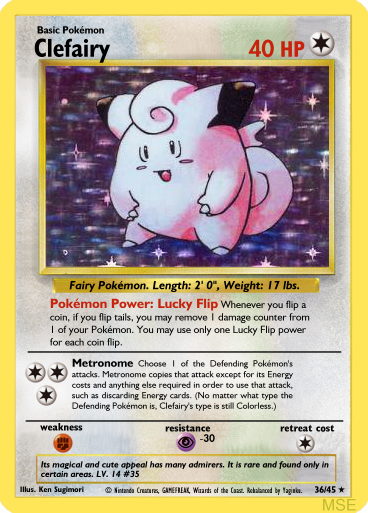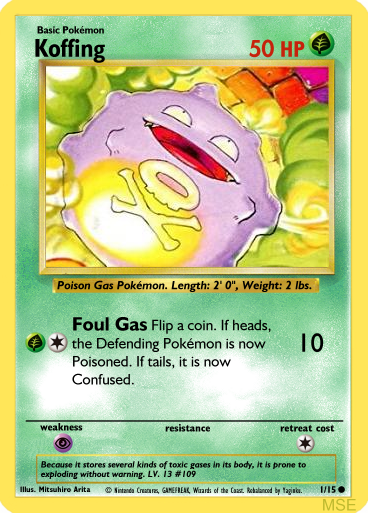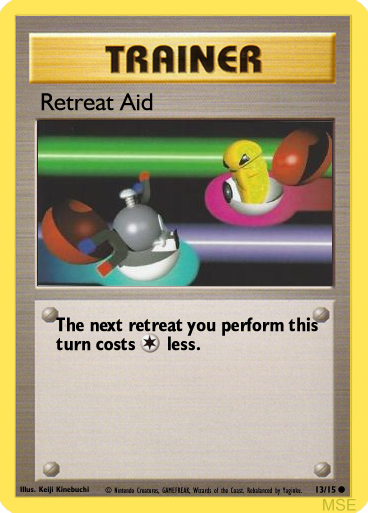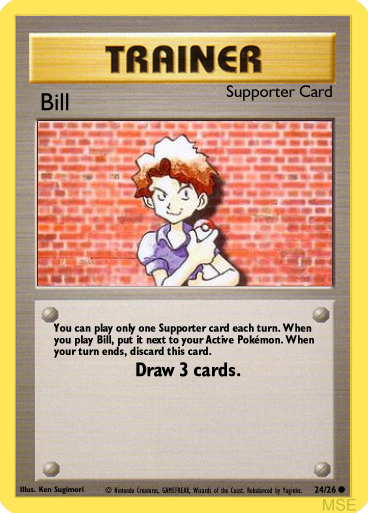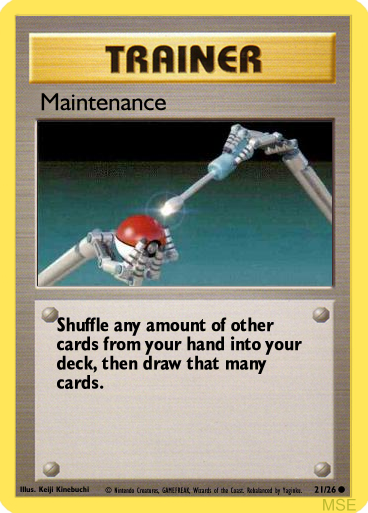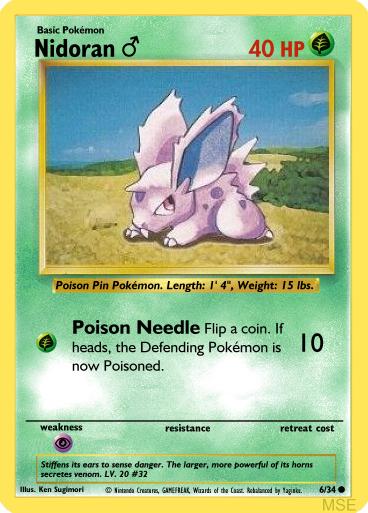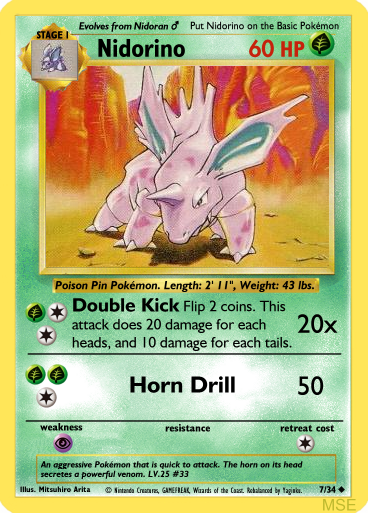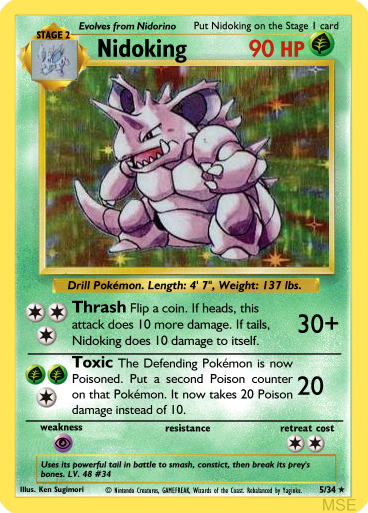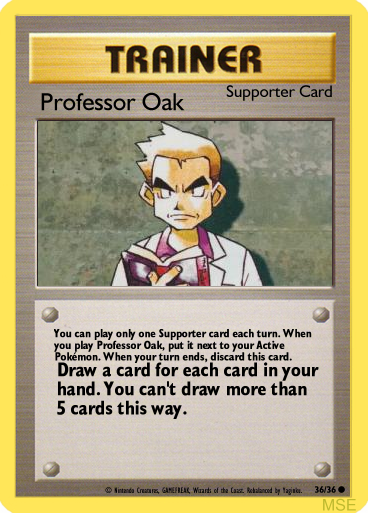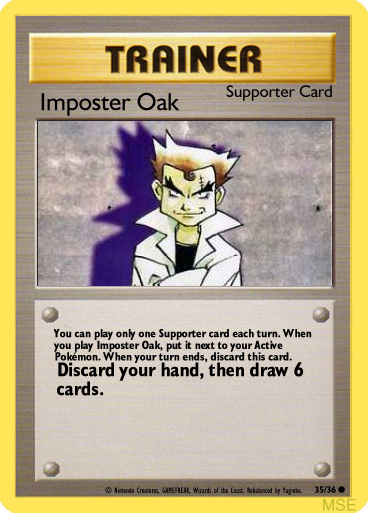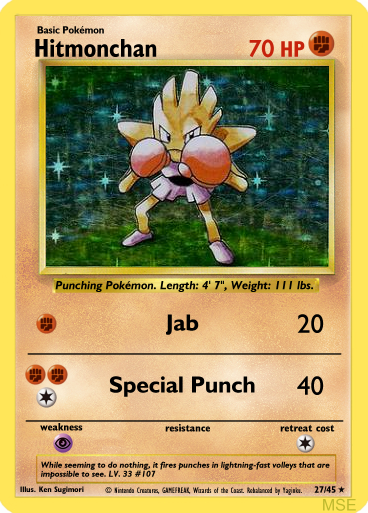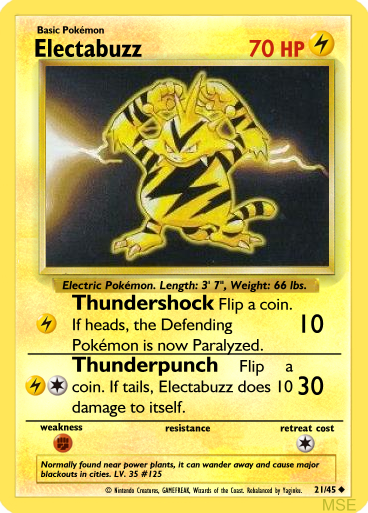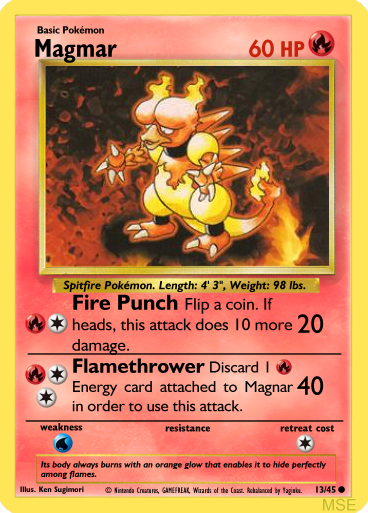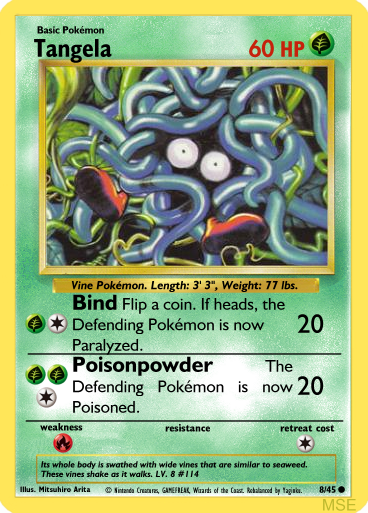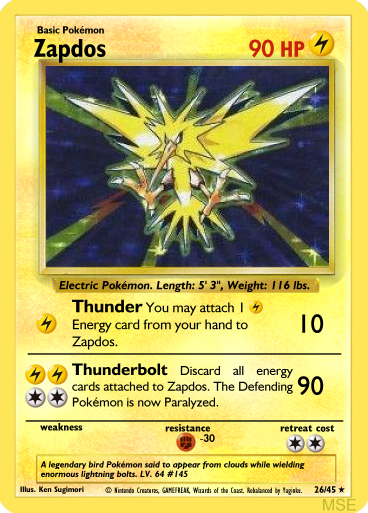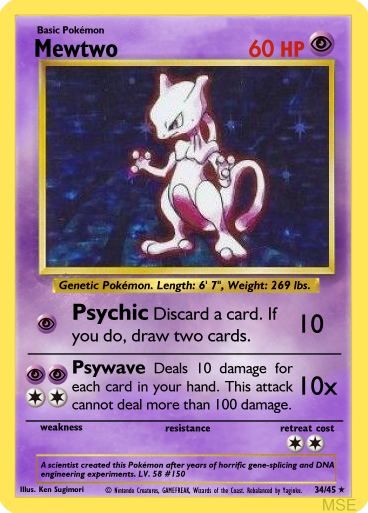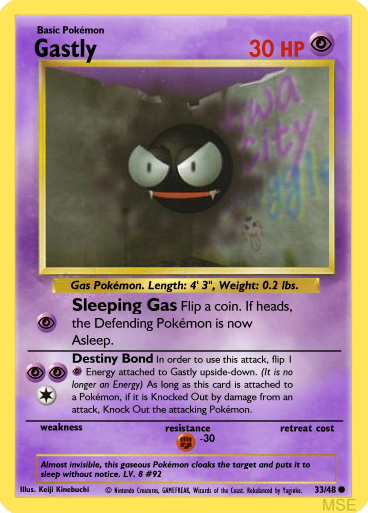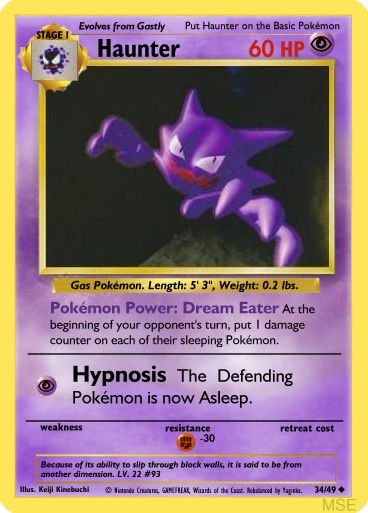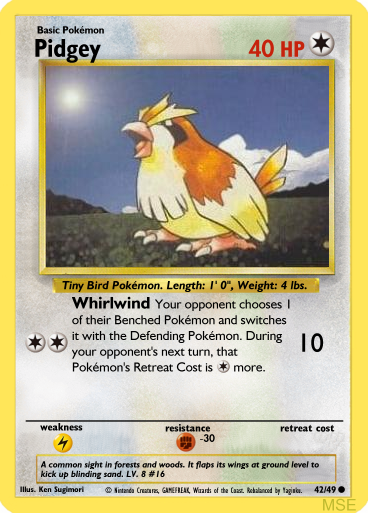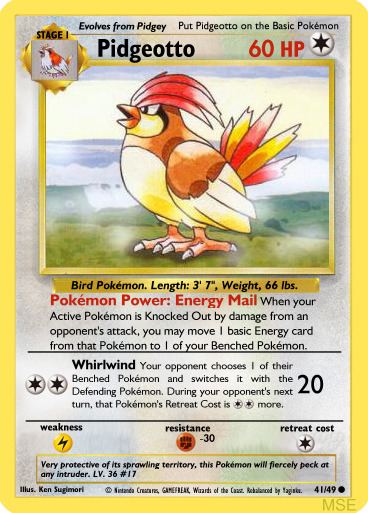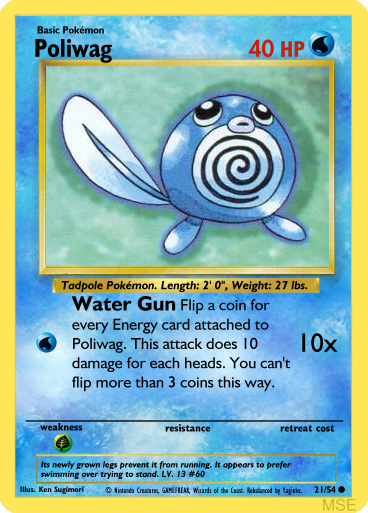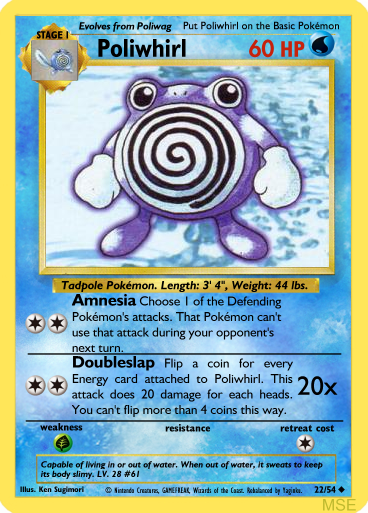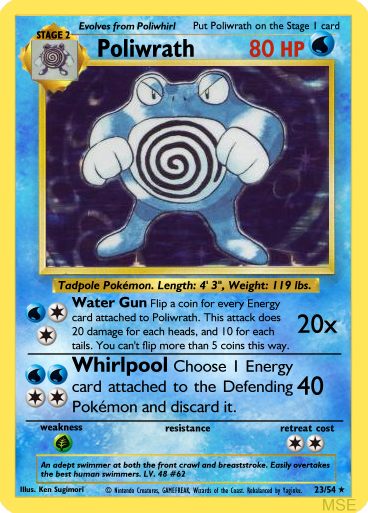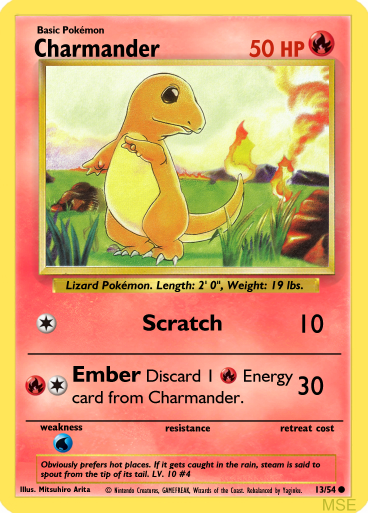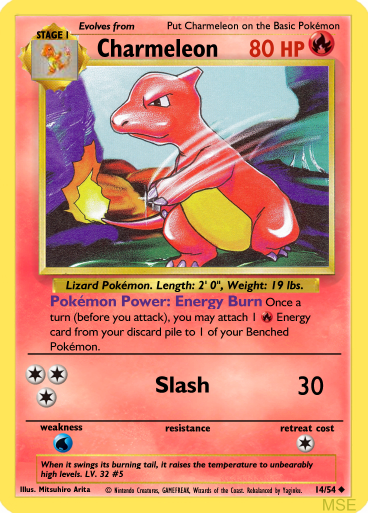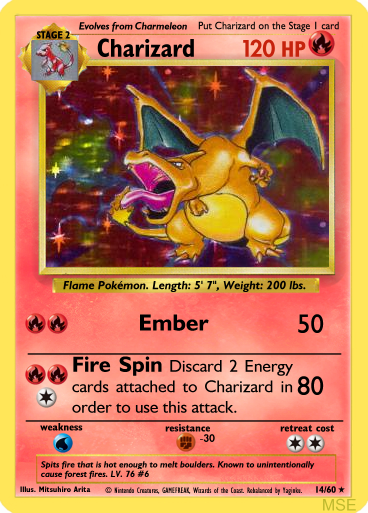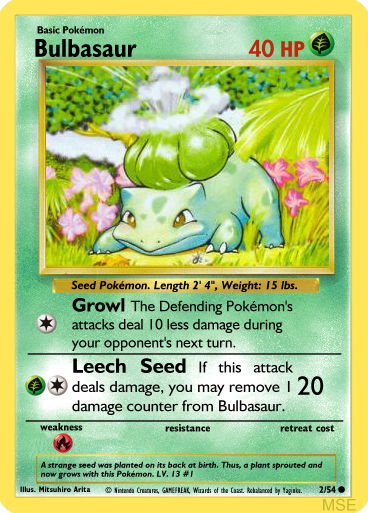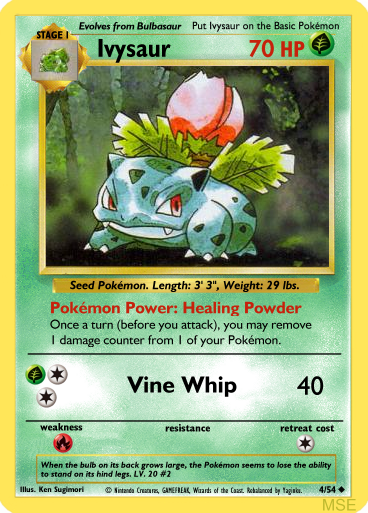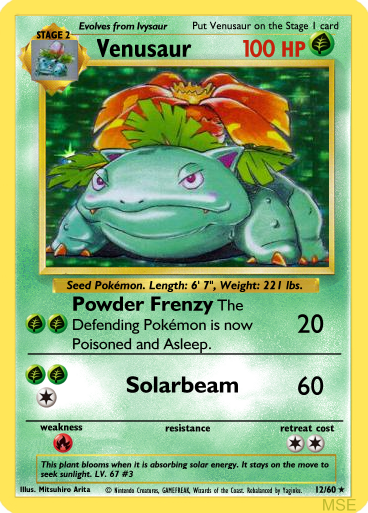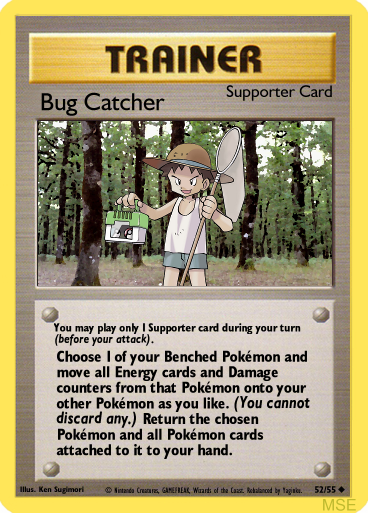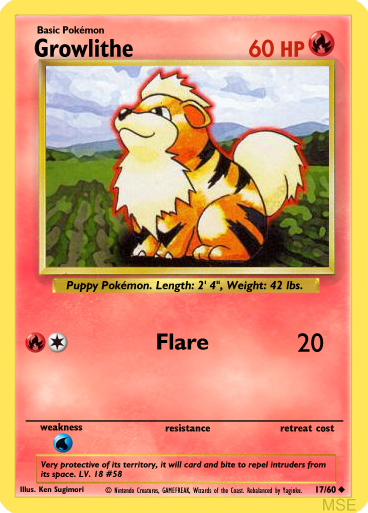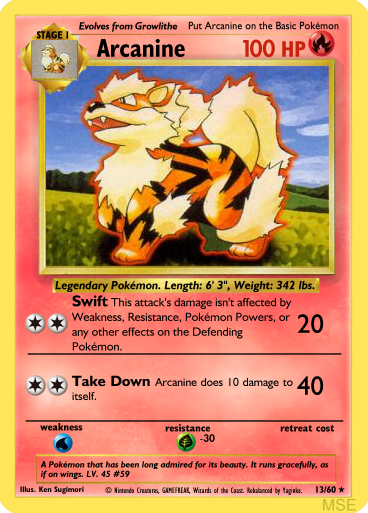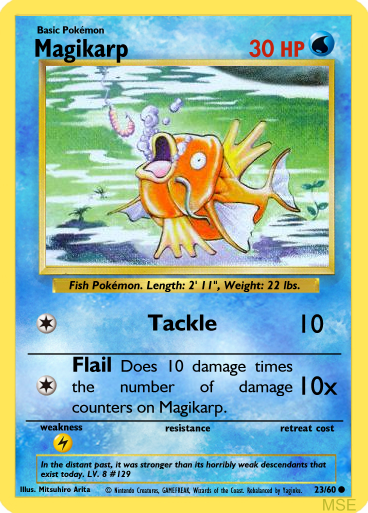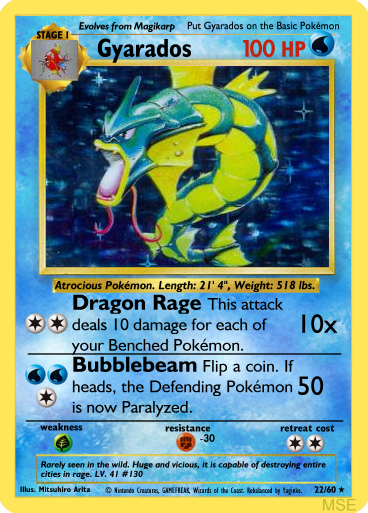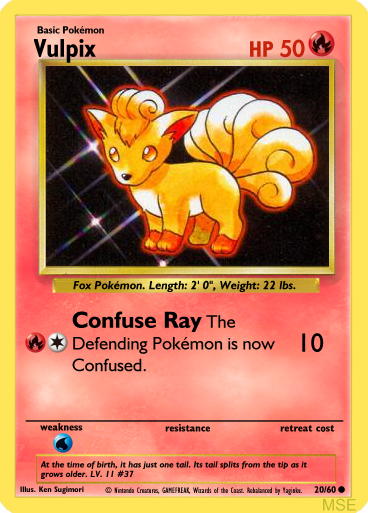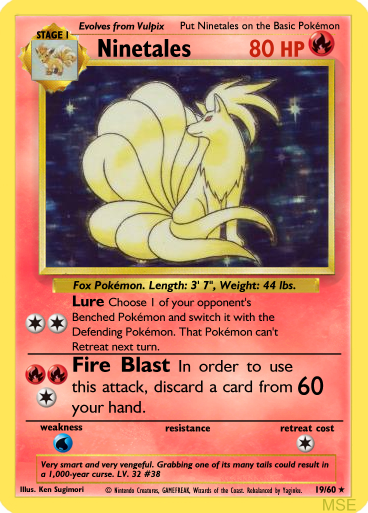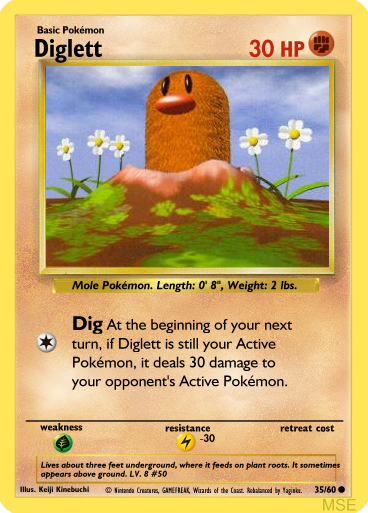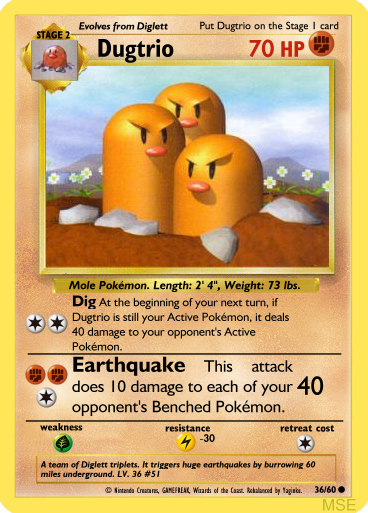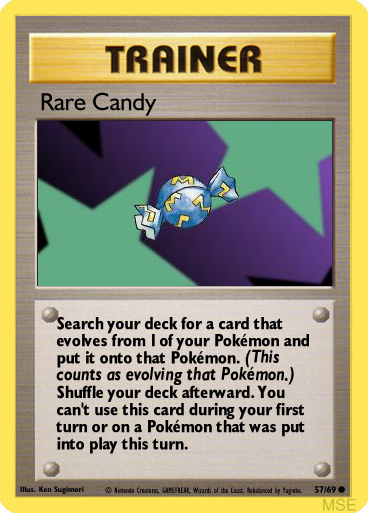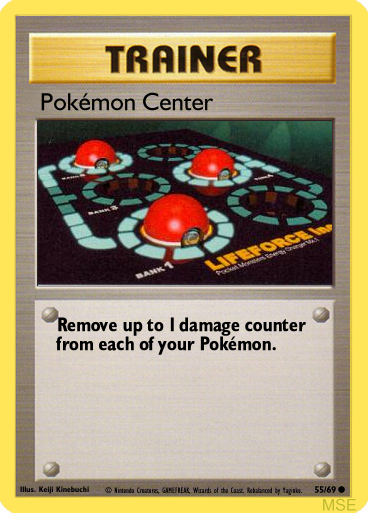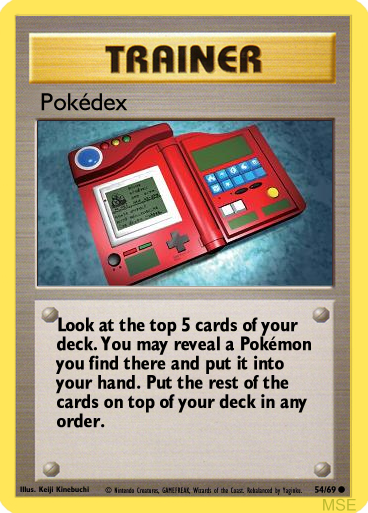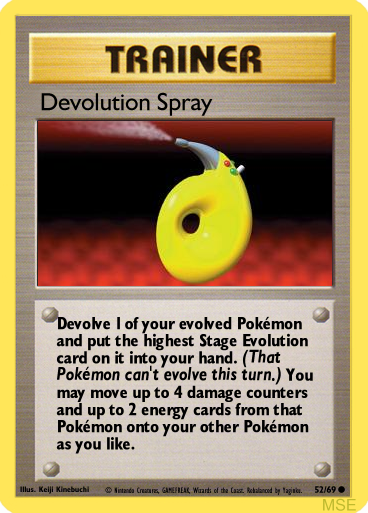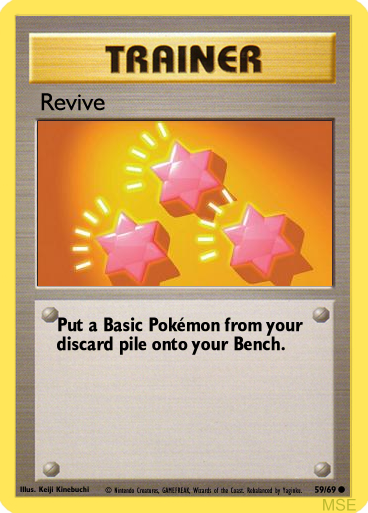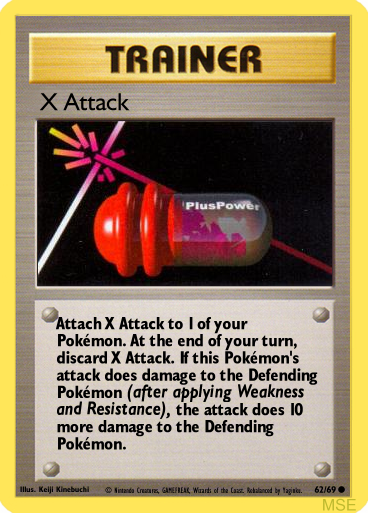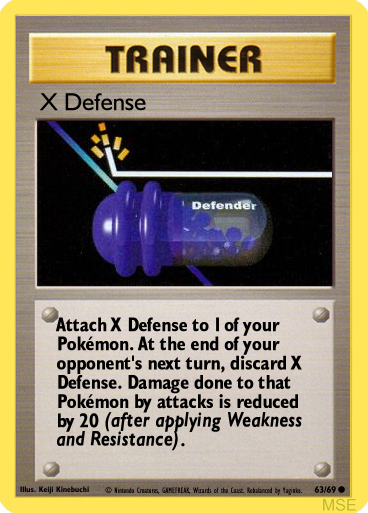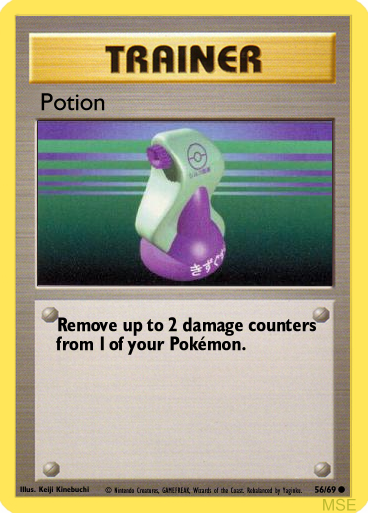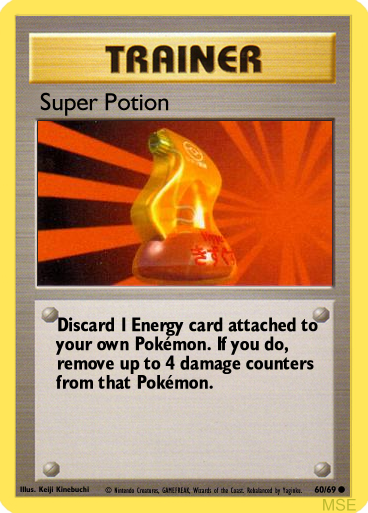I have been playing the Gameboy TCG game for a while now, being very curious of the early metagame and how card design evolved since the birth of the game. After a lot of experimentation and reading about the Base Set-to-Fossil meta, I found it surprisingly simple. It centered around a couple of extremely overpowered Trainers, like Gust of Wind for aggressive decks and Energy Removal for stall. That wasn't a bad thing - I found it exactly as charming and nostalgic as I wanted, even though I never really played my Base Set cards as a child. That said, I immediately wondered how this batch of cards could be improved and changed, what would happen if we applied modern design principles to old cards? By just removing (or reworking) the most broken Trainers we would absolutely flip the game on its head, but I wanted to go further and take a look at every single card.
I'm sure I'm not the only person to attempt this, especially given there's an official set doing exactly the same thing. But everyone's take is sure to be different, and I wanted to address some core elements of the game that had begun and remained unchanged since Base Set released. This includes some cards you still see today, core design principles and overall balance. Ultimately, I'm not just buffing and nerfing cards, but making a slightly different game with - hopefully - still the same charm.
==
ALBUM WITH ALL THE CARDS CAN BE FOUND HERE
BASE SET REMASTERED WEBSITE
TABLETOP SIMULATOR MOD
HERE
BASE SET REMASTERED DISCORD
HERE
==
Abilities on Stage 1 Pokemon
If you are a fan of a Stage 1 Pokemon in a two-stage line, then you know the pain of your favorite always getting sidelined by its more popular evolution, or just straight up getting skipped with a Rare Candy. Meanwhile, if you're a player that utilizes Ability Pokemon, you might find yourself with a bench full of unusable pieces, making each game that much less complex. There is a solution that does appear sometimes in the modern sets and we're going to apply it here - putting Abilities on Stage 1 Pokemon, while reserving the Stage 2 for big attackers.
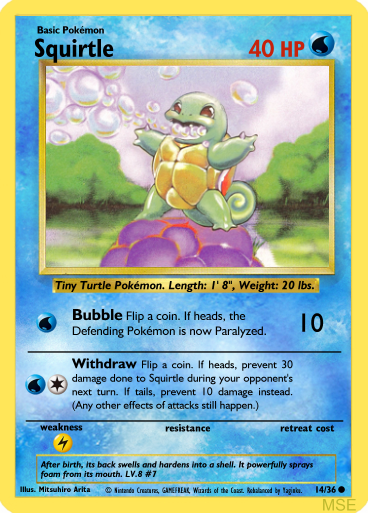
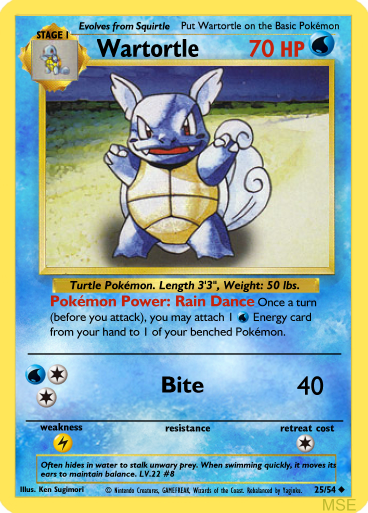

In this example, I have removed Blastoise's signature ability - Rain Dance - and moved it to Wartortle. I also nerfed it severely, but allowed you to scale it up by playing multiple Wartortles. Now Wartortle has a place in the game and, when you're ready, you can evolve straight into Blastoise for a major beatdown.
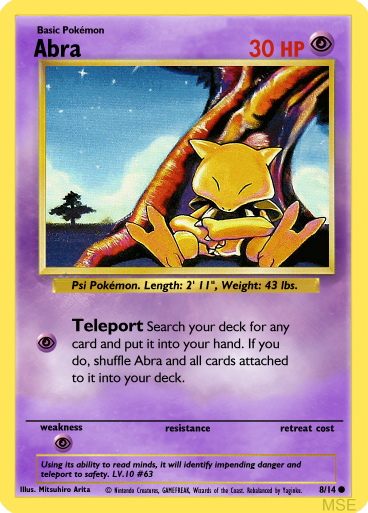
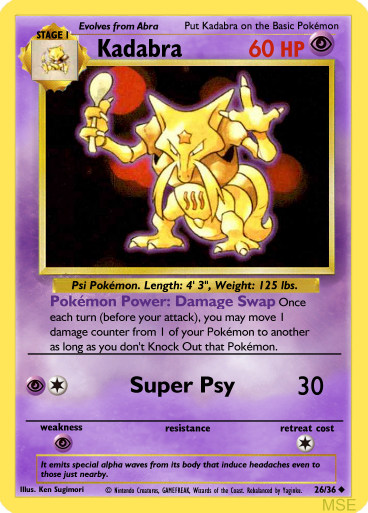
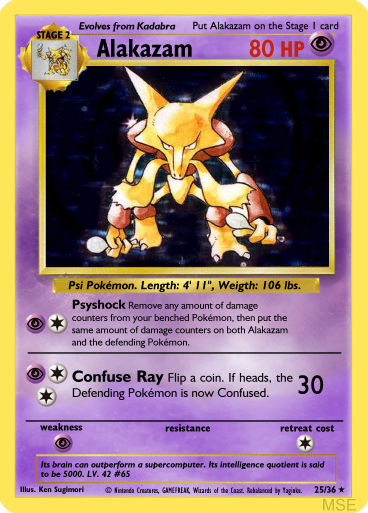
Alakazam's ability allowed it to stall the game indefinitely when paired with Scoop Up. Now, much like with Wartortle, its single-use variant appears on Kadabra instead, with Alakazam itself possessing the ability to go nuclear and move all of your damage counters to itself and the opposing Pokemon simultaneously. Also, Abra gets a cute attack that lets it dive into your deck for any card.
Splashing
As you can see on the cards above, the costs of attacks are generally cheaper and involve more colorless energy than originally. This is to encourage more splashing and boxing out your decks to tackle multiple threats. Obviously energy types are still a consideration, but it's also important for me to provide each card with a super-effective counter. Here's one example.
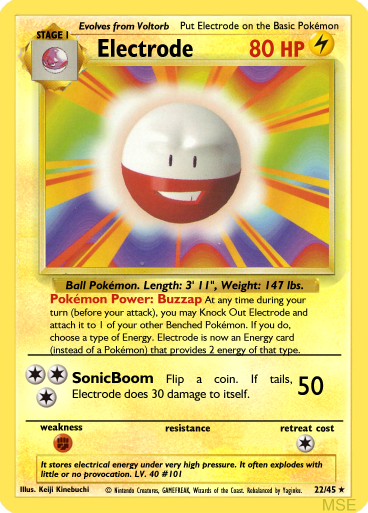
The old Electrode hasn't changed much, but its attack was made completely colorless (and given a slightly bigger drawback). It makes sense - its ability states it can transform into any energy, being useful in almost every deck, but yet its attack is horribly unsplashable, making it a one-trick pony. Now, it deals 50 Lighting damage - exactly enough to knock out an opposing Blastoise, should it become too unruly in the meta.
Supporters
Yeah, Supporters went all Back to the Future and reappeared to help with some more problematic Trainer cards. It was important to me to not just make stuff up when it comes to new cards, but the effect of Gust of Wind obviously needed to find its way onto a Supporter - and since it's already tradition to have this effect on a main villain, the choice was pretty obvious.
EDIT: Further in the thread I have decided that I should not use members of the Gym challenge, nor Team Rocket, on the cards as they're the stars of their own future sets. As such, I have changed this card to 'Rival'.
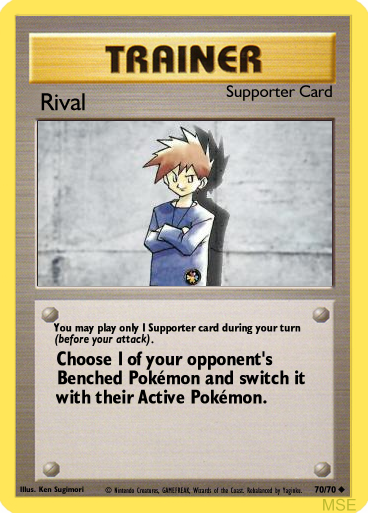
Conclusion
There are many more cards I have prepared and am excited to share. The goal is to go through every card from the Base Set-to-Fossil era and re-create the whole format with completely new cards and mechanics. If you are interested, or have any feedback, let me know.
I'm sure I'm not the only person to attempt this, especially given there's an official set doing exactly the same thing. But everyone's take is sure to be different, and I wanted to address some core elements of the game that had begun and remained unchanged since Base Set released. This includes some cards you still see today, core design principles and overall balance. Ultimately, I'm not just buffing and nerfing cards, but making a slightly different game with - hopefully - still the same charm.
==
ALBUM WITH ALL THE CARDS CAN BE FOUND HERE
BASE SET REMASTERED WEBSITE
TABLETOP SIMULATOR MOD
HERE
BASE SET REMASTERED DISCORD
HERE
==
Abilities on Stage 1 Pokemon
If you are a fan of a Stage 1 Pokemon in a two-stage line, then you know the pain of your favorite always getting sidelined by its more popular evolution, or just straight up getting skipped with a Rare Candy. Meanwhile, if you're a player that utilizes Ability Pokemon, you might find yourself with a bench full of unusable pieces, making each game that much less complex. There is a solution that does appear sometimes in the modern sets and we're going to apply it here - putting Abilities on Stage 1 Pokemon, while reserving the Stage 2 for big attackers.



In this example, I have removed Blastoise's signature ability - Rain Dance - and moved it to Wartortle. I also nerfed it severely, but allowed you to scale it up by playing multiple Wartortles. Now Wartortle has a place in the game and, when you're ready, you can evolve straight into Blastoise for a major beatdown.



Alakazam's ability allowed it to stall the game indefinitely when paired with Scoop Up. Now, much like with Wartortle, its single-use variant appears on Kadabra instead, with Alakazam itself possessing the ability to go nuclear and move all of your damage counters to itself and the opposing Pokemon simultaneously. Also, Abra gets a cute attack that lets it dive into your deck for any card.
Splashing
As you can see on the cards above, the costs of attacks are generally cheaper and involve more colorless energy than originally. This is to encourage more splashing and boxing out your decks to tackle multiple threats. Obviously energy types are still a consideration, but it's also important for me to provide each card with a super-effective counter. Here's one example.

The old Electrode hasn't changed much, but its attack was made completely colorless (and given a slightly bigger drawback). It makes sense - its ability states it can transform into any energy, being useful in almost every deck, but yet its attack is horribly unsplashable, making it a one-trick pony. Now, it deals 50 Lighting damage - exactly enough to knock out an opposing Blastoise, should it become too unruly in the meta.
Supporters
Yeah, Supporters went all Back to the Future and reappeared to help with some more problematic Trainer cards. It was important to me to not just make stuff up when it comes to new cards, but the effect of Gust of Wind obviously needed to find its way onto a Supporter - and since it's already tradition to have this effect on a main villain, the choice was pretty obvious.
EDIT: Further in the thread I have decided that I should not use members of the Gym challenge, nor Team Rocket, on the cards as they're the stars of their own future sets. As such, I have changed this card to 'Rival'.

Conclusion
There are many more cards I have prepared and am excited to share. The goal is to go through every card from the Base Set-to-Fossil era and re-create the whole format with completely new cards and mechanics. If you are interested, or have any feedback, let me know.
Last edited:


